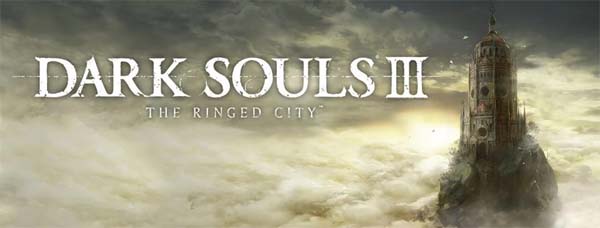
FROM Soft has an erratic track record with how cryptic it can be to find the DLC in the Dark Souls and Bloodborne games. The first Dark Souls required an absolutely arcane process that you'd probably never discover if you didn't already know how to do it. Dark Souls II apparently had its three DLC planned form the beginning, as the vanilla game included shrines for accessing each DLC - at least one of which is in plain view and can't be missed. Bloodborne put a prompt on the screen telling you where to go, but accessing the DLC still required the player to counter-intuitively interact with a specific entity in the game world. And Dark Souls III's first DLC added a character that you could talk to who teleported you to the DLC.
So how would The Ringed City implement its entrance to the DLC? Would it require some arcane process of killing optional enemies in optional areas? Would a dialogue box just pop up to tell the player where to go? If you ask me, The Ringed City might have the laziest and most boring access point of them all. An extra bonfire just appears at one of two specific points, which teleports you to the new area. It makes the whole thing feel like a very detached afterthought.
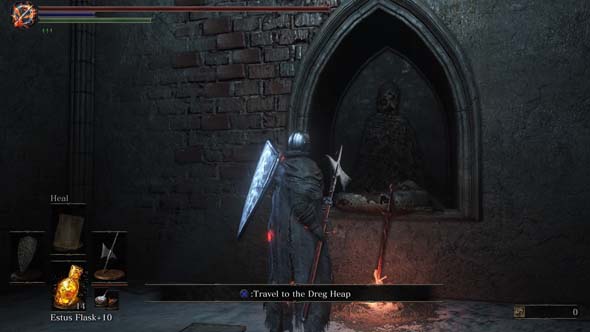
If you don't want to wait till the end of the game, you can access the DLC early by beating Ariandel.
If there's one common thread for the DLC, it's that it always requires the player to be teleported across space and/or time. Continuing that tradition is disappointing. I was really hoping for the DLC to be integrated into the actual game world -- that it would reveal some previously-blocked-off path in some obscure or interesting region of the map that would simply allow the player to walk to the DLC, thus revealing the game world to be much larger than originally believed. Like maybe defeating the Stray Demon gatekeeper above Farron could have opened the gate and revealed a path to the DLC. Or the Kiln of the First Flame could have a new path leading down into the Dreg Heap. Or you could descend into the chasm below the Profaned Capital. Something like that.
Maybe as a fun easter egg for fans, the access point could have been hidden behind a statue sitting behind Andre the Blacksmith in Firelink Shrine. But no, it's just an extra, out-of-place bonfire. Further, the fact that this expansion is an extension of the plot from Ariandel, and the very anti-climactic nature of Ariandel, makes it seem like Ariandel should have been the first act of this expansion, but was separated out into its own expansion for ... whatever reason... [More]
615e23c6-c00b-4bcf-b501-dd94af9350d6|2|3.0
Tags:Dark Souls, Dark Souls III, the Ringed City, DLC, expansion, Earthen Peak, Desert Sorceress, Desert Pyromancer Zoey, Filianore, Darkeater Midir, dragon, Slave Knight Gael, humanity, Dark Soul, Demon's Souls, Old Monk, PvP, Hidetaka Miyazaki
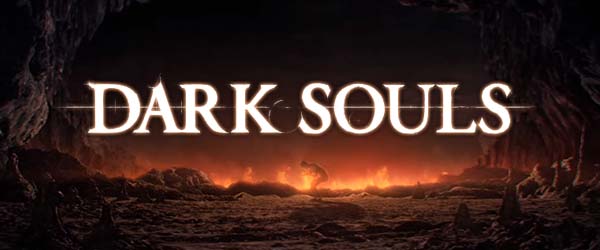
I'm going to do something that I don't normally do, which is to muse a little bit on the theories of other fans. Normally, when I write these lore posts, I write about what I believe - my own personal interpretation. In this case, however, I stumbled upon a video and a blog written by two different users that posit two entirely different (and probably contradictory) fan theories regarding the Souls games. Both theories piqued my interest and lead me down a rabbit hole of my own thought and speculation. So I'm going to summarize the theories that these two have pitched, and also throw in my own thoughts.
But first, let's review the conventional Dark Souls wisdom of the cycles of Fire and Dark. According to conventional wisdom, the dragons and archtrees of the Age of Ancients existed at the genesis of the world. The fire then appeared and ushered in the Age of Fire, but the fire faded, and the Age of Dark began. Lord Gwyn sacrificed himself to rekindle the flame and renew the Age of Fire, but it eventually faded again, leading to an Age of Dark. And the world continued in this endless cycle of the fire
fading and then being rekindled.
An overarching cycle of world-creation?
First, I'll start with a video by The Ashen Hollow, which is about the Cycle of Ages, and which speculates that the Soul of the Lords and Age of Dark ending establishes that the Age of Dark eventually gives way to yet another Age of Ancients. This creates a cycle of cycles, in which not only does the world of Dark Souls repeat Ages of Fire and Ages of Dark, but that once that cycle has run its course, it repeats yet another cycle of world-creation. Dark Souls III, therefore, takes place at the end of an Age of Fire, but it also takes place at the tail end of a cycle of world-creation and destruction. So Dark Souls III is a sequel to the first Dark Souls, and also the first Dark Souls is - in a sense - a sequel to Dark Souls III.
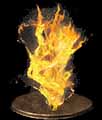
"Soul of the Lords.
One of the twisted souls, steeped in strength.
Use to acquire numerous souls, or transpose to extract it's true strength.
Since Lord Gwyn, the first Lord of Cinder, many exalted lords have linked the First Flame, and it is their very souls that have manifested themselves as defender of the flame."
When the fire inevitably fades, there will be an Age of Dark. This we know. The entire game series, so far, has been about perpetuating this Age of Fire for as long as possible in order to avoid the Age of Dark. Though the first and third game gives us the explicit option to initiate an Age of Dark, it's unclear if that ever actually happens in the canon of the series. And even if it does, the ending of Dark Souls II establishes that either course of action will just result in that chosen age cycling back to the other. We've never actually seen a proper Age of Dark, so we know little of what it would be like. Perhaps the Age of Dark is not permanent. According to the Fire Keeper (if given the Eyes of a Fire Keeper), the Age of Dark is not completely without fire, for there will be little embers dancing in the distance, left to us by past lords. [More]
f4e772f4-cf45-45f5-a271-3c8dd01253f5|3|5.0
Tags:Dark Souls, lore, Age of Ancients, Age of Lords, Age of Fire, Age of Dark, Age of the Deep Sea, cycle, prophecy, Dark Soul, humanity, Furtive Pygmy, Gwyn, first flame, Kiln of the First Flame, archtree, Archdragon Peak, dragon, puss of man, light, dark, Soul of Lords, Ebrietas, Seath the Scaleless, Patches, Moonlight Greatsword, Marvelous Chester, Oceiros, Demon's Souls, Bloodborne, Old One, fog, soul, blood, The Ashen Hollow, James Wynne, H.P. Lovecraft, Armored Core, King's Field

Even though the player character in Dark Souls can be in a "hollow" state, the player never truly goes hollow. At least, not in the sense that NPCs and enemies have gone hollow.
According to Dark Souls' mythology, the undead are condemned to repeatedly wander Lordran in search of a cure, being unable to permanently die. But for virtually all such undead, this quest is futile. An undead can temporarily stave off hallowing by absorbing souls or infusing themselves with the humanity of someone else. Eventually, an undead dies one too many times, or is worn down by the daily grind of collecting souls, and loses the will to go on -- or is simply unable to continue collecting souls and humanity. When this happens, that undead becomes hollow, loses his sanity and free will, and continues to wander the world as a mindless zombie attacking any un-hollowed that it encounters on sight.
It is unknown how many "Chosen Undead" are brought to Lordran or the Undead Asyulm, but the Crestfallen Warrior at Firelink tells us that many have come before you. Is it possible that all hollows in Lordran were at some point "Chosen Undead", tasked by Frampt to retrieve the Lordvessel and re-kindle the dying flame?
Probably not.
A great deal of the hollows that you encounter in the game were likely former residents of Lordran, and there was no need to select a "Chosen Undead" until Gwyn's power faded to a "cinder", and the fire began to die. This presumably took a very long time - a whole "age".
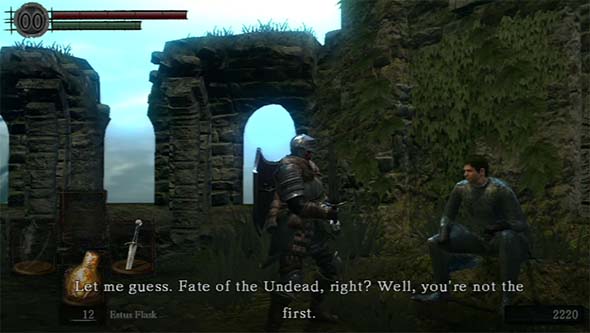
The Crestfallen Warrior informs us that we are not the first "chosen undead",
and suspects that we won't be the last either.
Avoiding hollowness with purpose
Many undead adventurers wandered into Lordran (or were abducted and taken there), and they struggle to hold onto their precious humanity for as long as possible, fighting for their lives in the fear that they, too will go hollow. Some, like the Crestfallen Warrior, resign themselves to the inevitability of hollowness, and find a sense of purpose in warning other new arrivals that they, too, are doomed. Others pursue some seemingly impossible goal or objective in the hopes that the journey will provide them with the sense of purpose necessary to avoid (or at least delay) hollowing. And yet others have taken up crafts or vocations such as blacksmithing, vending, or guarding something in order to keep them focused and avoid hollowing (and to exchange goods or services for the very souls that they need to stave off the hollowing). Keeping such a goal may help keep an undead partially lucid, but they also seem to begin to forget everything else, and only the knowledge of their quest or craft remains. Perhaps, the undead guarding various areas of the game were, at one point, tasked with protecting that place (or something within that place), but have long since lost their mind, and only that compulsion to defend has remained.
Going on "one final quest" seems to provide adventurers with enough focus to hold back hollowing.
But hollowing isn't just a thematic element reserved for non-player characters; hollowing is also a mechanic in the game that affects the player. Whenever the player character dies, you are reborn at the last bonfire in a hollowed state, unable to summon help from allies until you restore your humanity through the consumption of someone else's humanity. In Dark Souls II, hollowing further handicaps the player by cummulatively reducing your total health each time you die, and only restoring your humanity can refill your health meter. In both these cases, the player is not truly hollow; you are only in a state of partial hollowing.
It's unclear whether non-player characters are able to die and restore their humanity, or if deaths contribute to an irreversible progression towards hollowness. There are, after all, apparently hollowed NPCs such as the undead merchant in the Undead Burg and blacksmith Lenigrast in Majula who are sane enough to have kept their shops open. The presence of NPC summon signs hints at the possibility that they, too, are capable of restoring their own humanity through the same mechanisms that you can, but the game itself justifies this with ambiguous appeals to "time distortion" and hypothetical parallel realities that obfuscates the matter - particularly where Solaire and Lautrec are concerned.
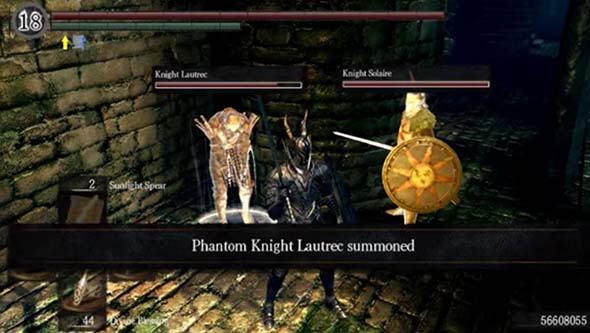
Summoned NPCs may recover humanity as you do, or they're from another time or dimension, or both.
Solaire's dialogue refers to "heroes centuries old phasing in and out.". Solaire may be using the words "world" and "time" interchangeably. This seems to be the game's justification for how summoning works: you may be literally summoning someone from a bygone era into your own time period. Anytime, you are summoned to someone else's world, you are also being transported to another time (past or future, depending on whether or not you finish the game). Solaire and Lautrec seem to somehow come from another time or dimension, but other characters definitely seem to exist within your world and time: Andre, the Crestfallen Warrior, Rhea and her companions, Big Hat Logan and his apprentice, and so on are all undead who have seen many other "Chosen Undead" come to Lordran seeking their destiny.
In any case, it's not until an undead "gives up" that the hollowing process becomes complete. What do we mean by "giving up"? For an NPC, it means that they gave up on life and went hollow, and the player typically ends up putting them down. For the player, it means that you stop playing the game. As long as you continue to play the game, then your character will continue to hold onto a sliver of humanity and maintain his or her sanity for a little while longer. When you put down your controller for the last time, you have condemned your character avatar to finally succumbing to hollowness, whether you recognize it or not... [More]
ce0263eb-66fa-4c8b-b624-2655b7809cd6|3|4.7
Tags:Dark Souls, Dark Souls II, Scholar of the First Sin, Demon's Souls, From Software, undead, Lordran, Drangleic, hollow, hollowing, humanity, souls, zombie, Solaire, Lautrec, Blacksmith Lenigrast, Crestfallen Warrior, Andre of Astora, Rhea of Thorolund, Seigmeyer of Catarina, Big Hat Logan, Gwyn, Sunlight Maggot, God of War, covenant, Warrior of Sunlight, Gravelord Servant, vagrant, perma-death, NPC, lore, Dragon's Dogma, pawn, online, multiplayer, PSN, XBox Live, Steam, emergent narrative
|

| 12 | | | | | | | 60 | | 11 | | | | | | | 55 | | 10 | | | | | | | 50 | | 09 | | | | | | | 45 | | 08 | | | | | | | 40 | | 07 | | | | | | | 35 | | 06 | | | | | | | 30 | | 05 | | | | | | | 25 | | 04 | | | | | | | 20 | | 03 | | | | | | | 15 | | 02 | | | | | | | 10 | | 01 | | | | | | | 05 |
|